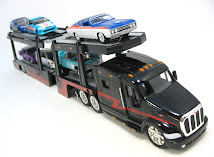 South Korea is irritating a new way to turn public transport green by using a technology popular in electric toothbrushes and razors to power buses and cars.
South Korea is irritating a new way to turn public transport green by using a technology popular in electric toothbrushes and razors to power buses and cars.The country's top technology university on Tuesday revealed a new electric transport powered by recharging strips embedded in roads that transfer energy through magnetic connections. There are no straight connections with wires.
Vehicles with sensor-driven magnetic devices on their underside suck up energy as they travel over the strips surrounded a few centimeters under the road.
The technological concept behind the idea has been approximately for about 100 years. We have found a superior way to transfer the electricity to make it practical, said B.K. Park, a project member at the Korea Advanced Institute of Science and Technology.
The university about 140 kilometers south of Seoul has four prototype buses using the technology on its campus and is in discussion with Seoul and other cities to have buses running in the next three years using the system called "online electrical vehicle."
The strips, which are connected to small electrical stations, are laid in bus lanes and roads running up to intersections so that vehicles can power up where traffic slows down.
The strips are in segments of several tens of meters in length and vehicles receive what is phrased "microcharges" each time they pass over one.
These vehicles are not similar to mobile phones that need to be charged for hours. Microcharges are moderately efficient, Park said. Unlike electric lines used for trams, vehicles do not need to be in stable contact with the strips and a person can touch the lines without receiving a shock.
The system allows electric cars and buses to cut down on battery size and widen ranges. The noncontact transfer of electricity also called inductive charging, works by magnets and cables on the underside of the vehicle making a connection with the existing in the recharging strip to receive power as they travel over it.
It is employed in some brands of electric toothbrushes that are conserved and water resistant, which do not need to be plugged into anything but use a magnetic connection to receive energy while resting in a cradle.
The online electrical vehicle system up to now has proven safe to humans and machinery. The cost of installing the system is an expected 400 million won ($353,500) per kilometer of road, Electricity is extra.
For More Information On New York Metropolitan Airspace Please Visit This Site: Auto Transport


0 comments:
Post a Comment